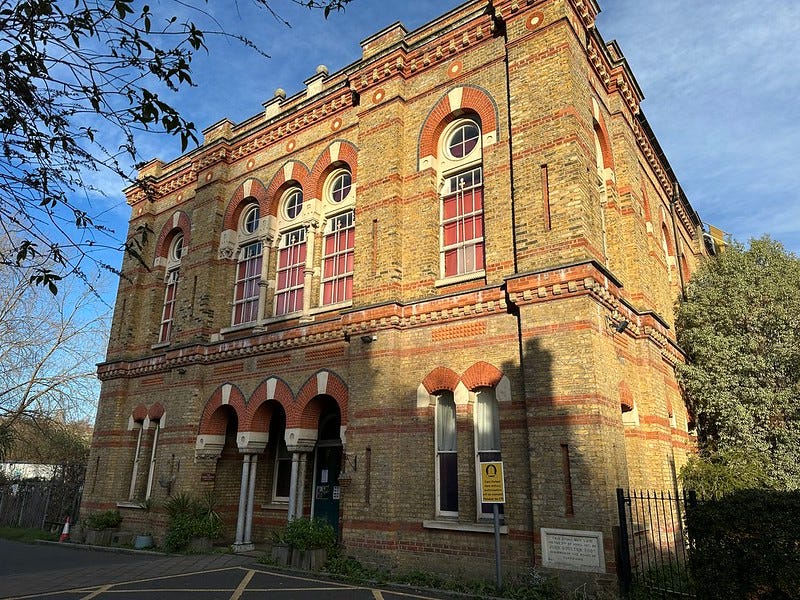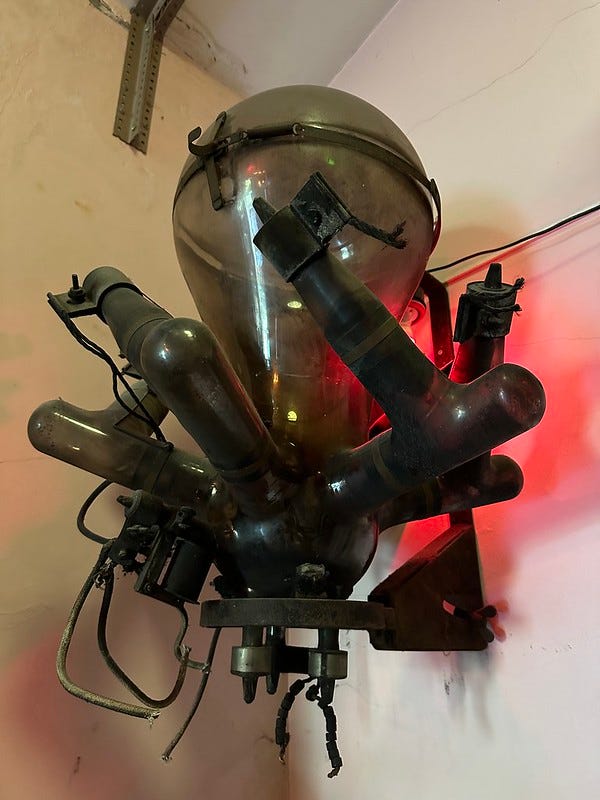Hidden away down a side-turning of a back street in Kennington is the Cinema Museum. This absolute treasure box deserves top billing on every Londoner’s bucket (of popcorn) list. It’s not only a fascinating collection of cinema memorabilia, but it’s also a functioning cinema. Let’s see what’s behind the curtain…
That’s for the main feature. Any trip to the cinema begins with the trailers which, in this case, come in the shape of the History Radar…
History Radar
Upcoming events for those who enjoy London history.
🌳 CHARTERHOUSE GARDEN TOUR: On 16 July, join a member of the garden team for a tour of the garden at the Charterhouse in Clerkenwell. Learn about the history of the building and its gardens, as well as work being undertaken to support biodiversity today.
🛖 LONDON'S VILLAGES: The former villages of Bermondsey and Rotherhithe are the focus of a free talk at Guildhall Library on 18 July. Hear about a saintly doctor, a bunch of pirates, a prince from a Pacific island, and other stories of these riverside villages. Watch in person at Guildhall Library, or online.
🍸 HISTORIC GIN TOUR: Also on 18 July, the Museum of London Docklands offers a Gin Tour around the West End, telling the story of the 18th century Gin Craze and its impact on Londoners. Wander from the Dominion Theatre through the former slums of St Giles, Seven Dials, Bow Street and Drury Lane to a 16th century pub in Holborn, hearing about Hogarth’s Gin Lane, Covent Garden’s prostitutes and the 1814 Great Beer Flood as you go.
🏡 KEATS HOUSE LATE: Keats House in Hampstead stays open later than usual on 18 July, giving you the chance to explore the poet's former home after hours. Visit the Hidden Histories of Keats House exhibition, or join a volunteer-led tour.
🍼 CALL THE MIDWIFE: Take a guided walk around Poplar on 19 July with Museum of London. It includes the real-life locations with links to memoir and TV drama Call The Midwife. Walk past the Lansbury Estate, Poplar High St and the site of Poplar Workhouse, and St Frideswide’s Mission House -- aka Nonnatus House.
❄️ ICE WEEKEND: On 20-21 July, the London Canal Museum in King's Cross holds an ice weekend, celebrating the space where ice was stored before the days of refrigeration. Go down into its Victorian ice well (Sunday only). descending by ladder into the underground space where ice used to be stored, and take part in all manner of ice-themed activities back above ground.
🤴🏻 HENRY VIII'S JOUST: Also on 20-21 July, cheer on your favourite knight -- or even a king -- at Henry VIII's Joust at Hampton Court Palace. The recreation of a Tudor event from 1533 sees daredevil tricks performed on horseback, along with falconry displays and food and drink stalls.
🐴 CART MARKING CEREMONY: One of London's quirkier events is the Ceremony of Cart Marking, a 500+ year old tradition by the Worshipful Company of Carmen. On 20 July, see a collection of handcarts, horses and carts, steam-driven vehicles, electric, solar-powered and hydrogen vehicles on display at Guildhall, with Livery Masters and Court Assistants in their official robes, chains and hats.
Inside London's Cinema Museum
It is impossible, I think you’ll agree, to walk past a building of such character and not want to go in.
This comely cuboid was built in 1873, not for a duke or a lord, but for the very poorest in society. You’re looking at a surviving chunk of the Lambeth Workhouse, a place of drudgery for anyone who couldn’t afford the cost of living.
Among its residents was a seven-year-old Charlie Chaplin. The future star endured a childhood of crushing poverty. His parents separated while he was an infant, and his mother Hannah struggled to make ends meet. On several occasions, the family resorted to the workhouse, including this building. Little could the boy have imagined the international fame that awaited him, nor that his temporary home would one day become a temple to his art. For today, this former workhouse is The Cinema Museum.
I recently paid my first visit, along with a dozen readers of Londonist: Time Machine. For the benefit of those who couldn’t make it, this is what you missed…
What in the devil’s manbag do you suppose this is?
An antagonistic robot from Lost in Space? An aquatic drone from The Abyss? No. The Cinema Museum doesn’t really go in for film props (although there are a few). This is first and foremost a museum on the history of cinemas, and the cinema-going experience, less about the films themselves.
The curious object shown above is, in fact, an “early type of rectifier used to provide a direct current for a cinema projector’s arc lamp”. It would have looked even more alien when in operation; effulgent, cerrulean, with a couple of litres of liquid mercury sloshing around the bottom. Proper Frankenstein’s laboratory stuff.






